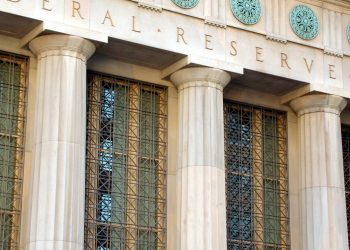The costs don’t stop once you purchase a home; for starters, now that you’re a homeowner, you’ll be paying homeowners’ insurance. Personal finance company Bankrate compared approved home insurance rate filing data from S&P Global Market Intelligence with its previous study of average home insurance premiums in 2022. The conclusion? Rates are increasing, but why?
According to the report, natural disasters are usual drivers of homeowners’ insurance rate increases. Due to climate change, disasters such as hurricanes, wildfires, and flooding are increasing throughout the country. The Insurance Information Institute (Triple-I) recorded 97 events that qualified as catastrophic losses in 2021, resulting in $92 billion of insured losses. This was up from 94 catastrophic events in 2020, resulting in $74 billion in insured losses, the report stated.
Economic instability is another key factor. However, home market value is generally not the issue, but rather the costs of rebuilding a destroyed home. Continued supply chain disruption and lack of widely available construction labor means the escalation of rebuilding costs, the report notes.
As a result of this, home insurance claims are compounding nationwide, and in turn, insurance companies are reevaluating their risk models, their eligibility requirements, and of course, raising their rates.
Key details from the report:
- S&P Global Market Intelligence reported that since January 2022, insurance carriers have filed 177 requests for home insurance rate increases across 43 states; Arizona was the top with 34 increases.
- The current average cost of homeowners insurance is $1,383 per year for $250,000 in dwelling coverage. If rate increases take effect, homeowners could pay an additional $62, or $1,445, for the same coverage.
- However, a high rate percent increase does not necessarily mean the highest number of policyholders will be affected.
- The 5 states set to see the highest percent rate change, and the number of policyholders who will be affected are:
- California: +15.3% rate change, 8,769 policyholders affected
- Washington: +12% rate change, 105,454 policyholders affected
- Arizona: +11.1% rate change, unknown number of policyholders affected
- Georgia: +9.9% rate change, 60,464 policyholders affected
- New Mexico: +9.1% rate change, 77,514 policyholders affected
- The 5 states set to see the lowest percent rate change, and the number of policyholders who will be affected are:
- Maine: -1.5% rate change, 2,106 policyholders affected
- Delaware: -1.35% rate change, 18,247 policyholders affected
- Michigan: +0.04% rate change, 137,046 of policyholders affected
- Kansas: +0.2% rate change, 23,062 policyholders affected
- New York: +1% rate change, 252,694 policyholders affected
- The largest Insurance Companies and 2022 Rate Increases
- Farmers: +19.613% rate change, 208,378 policyholders affected
- Nationwide: +14.877% rate change, 2,764 policyholders affected
- Liberty Mutual: +13.76% rate change, 94,592 policyholders affected
- Chubb: +9.127% rate change, 4,113 policyholders affected
- Travelers: +7.338% rate change, 116,196 policyholders affected
- Progressive: +6.096% rate change, 122,711 policyholders affected
- Allstate: +3.076% rate change, 2,577,660 policyholders affected
- USAA: +2.666% rate change, 99,002 policyholders affected
- American Family: +0.679% rate change, 35,861 policyholders affected
- The Florida home insurance crisis is causing insurance companies to liquidate their business in the state. As a state prone to tropical storms, this could be problematic for Florida homeowners.
What to do:
While a hike in your home insurance premium can be a foregone conclusion, there are ways to negotiate the situation. Bankrate recommends:
- Reviewing your current policy. Knowing the facts will make it easier for you to negotiate with your insurance agent.
- Asking about discounts for your premium. You may be eligible based on features of your home, such as installed security, organization memberships, claims history, billing preferences and more.
- Include your other policies with the same carrier. This will streamline things for you and could save you money with discounts.
- Shopping around for comparison quotes. If you’re dissatisfied with your premium, then your best option may be to look elsewhere, if only to get a picture of the price range.
Keep in mind, just like your coverage, your insurance premium is personalized, taking into consideration such as where you live, the age and square footage of your home, and the claims rate of your area, the report notes. This means that despite an overall hike in premiums, that doesn’t mean you will necessarily be paying more for your coverage.
Final thoughts from the report author:
“Although homeowners insurance rates are rising, your policy is still based on your personal rating factors. For this reason, it’s possible that your home insurance premium could actually decrease,” writes June Sham, insurance writer and author of the report. “This might be because your region had fewer claims compared to previous years, your home is still relatively new and constructed with weather-proof materials, or you now qualify for more discounts. Checking in periodically with an insurance agent or company representative can be the best way to stay up to date with changes to your policy.
“If you find that your homeowners insurance cost has significantly increased at renewal, keep in mind that there are still actions you can take to try and reduce the premium. A home insurance policy can be a valuable defense for your financial assets, which is why insurance experts and financial advisers advise keeping one in force,” Sham added.
To view the full report, visit https://www.bankrate.com/insurance/homeowners-insurance/2022-rate-increases/.
Devin Meenan is RISMedia’s editorial assistant. Email him your story ideas to dmeenan@rismedia.com.












